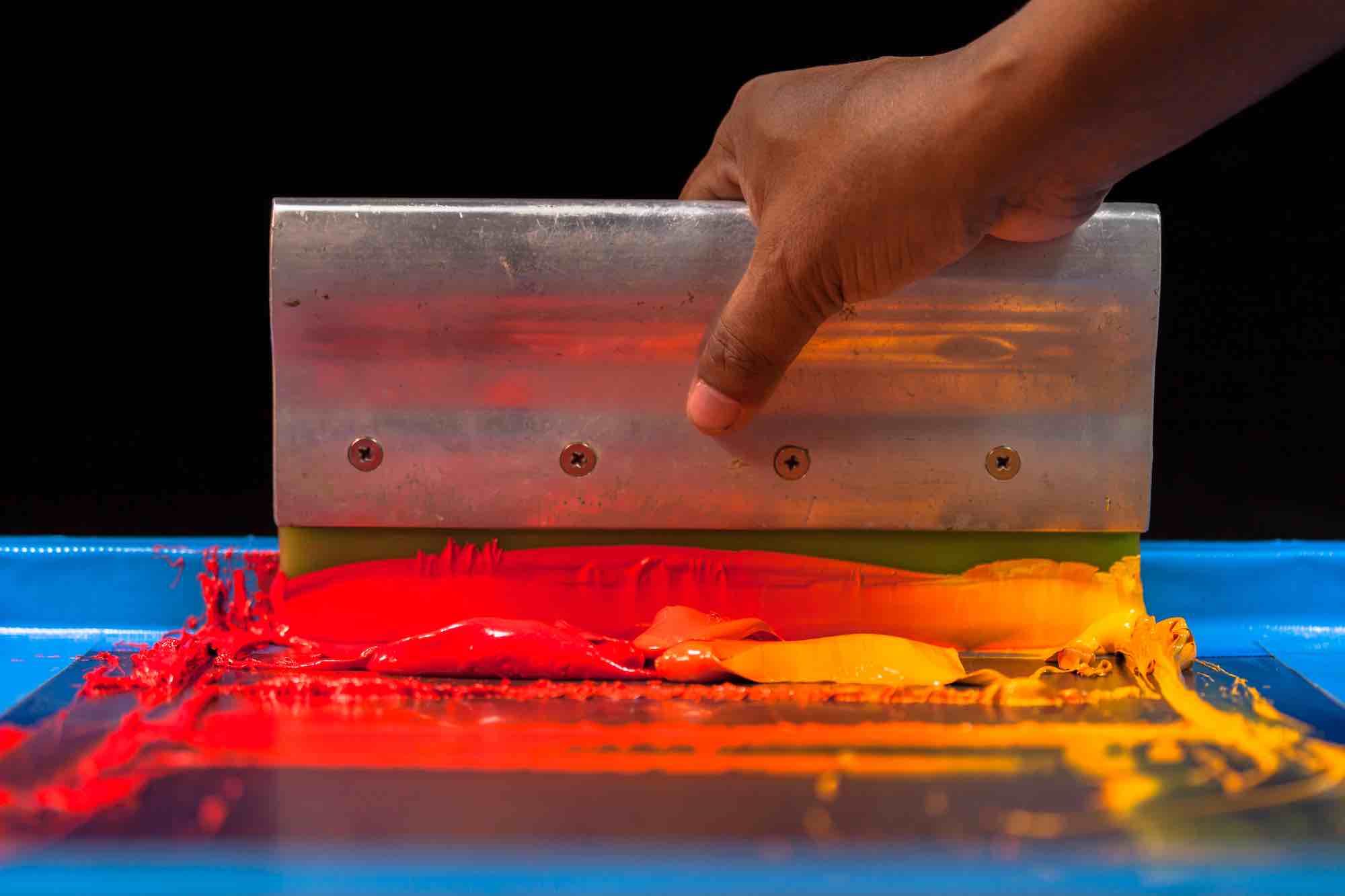Are those little cracks you sometimes see when screenprinting with water-based inks normal? Yes. But there is a way to stop it from happening.
We received this message from a customer: I screen print on cotton T-shirts using water-based inks. When the ink dries, the print tends to crack or split. What’s causing this? And how can I stop it from happening?
Furthermore, the customer continued, if I look at the T-shirt against the sun, I can see lots of tiny holes on the areas where I applied the ink. Is it possible to cover these, or is there just no way of getting rid of them?
First of all, about the “tiny holes”, this depends on the weight of the fabric, i.e. whether the fabric’s thread count is high or low. So, depending on the cotton you’re printing on, it is sometimes possible for these tiny holes to appear. Indeed, what the ink does is it dyes the fibres, so if the density of the fibres is relatively low, the weave will be fairly easy to distinguish.
As for the cracks, all water-based acrylic inks, if used with low thread count screens, tend to develop cracks after drying.
This means that the layer of ink, due to its thickness, doesn’t expand along with the fabric as it expands, and so it splits.
It splits, but it doesn’t come away: indeed, water-based inks are actually very resistant to washing, even more so when heated with an iron (or even better with a heat press).
Furthermore, don’t wash the garment within the first 72 hours, as this is the time needed for the ink to harden completely.
To resolve the problem of cracking, one solution is to use water-based inks that have more elasticity. Modatex inks, for example, are available in a number of elastic versions in a variety of colours: Transparent Base, Elastic White, Elastic Black, Colours for four-colour process printing.
If printing on light-coloured materials, we recommend mixing some transparent base with the normal colours to achieve the required elasticity.
If printing on dark materials, it’s a good idea to print a background using the elastic white and then print on this with the normal colours. It’s common for the elastic colours to be less opaque than the normal colours.
Alternatively, there’s also a professional water-based ink that you can use, Aquatech, it has a matt finish, is soft hand, smooth to the touch, and is partially elastic.

